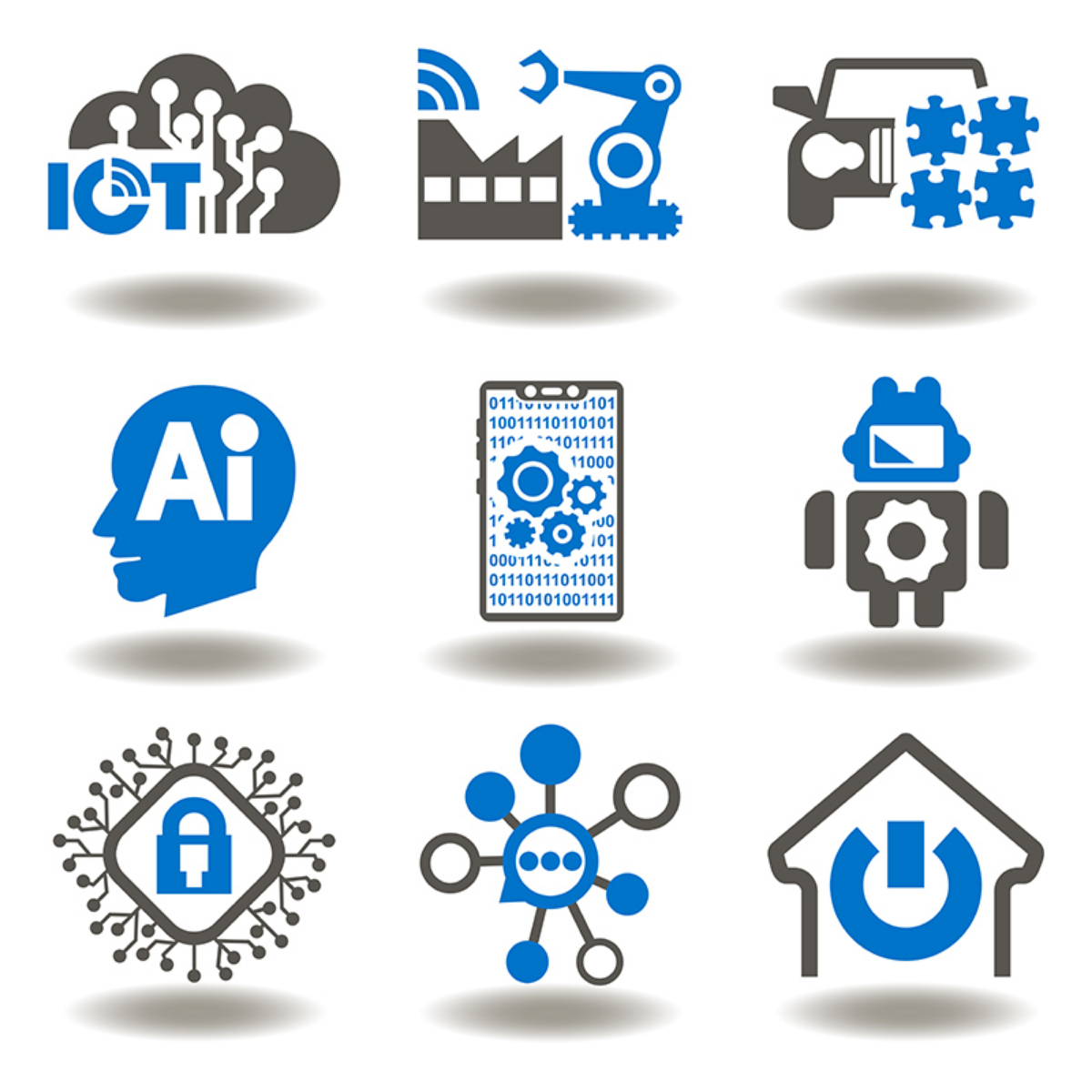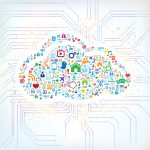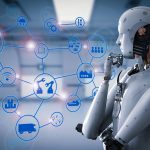AI systems typically demonstrate at least some of the following behaviors associated with human intelligence: planning, learning, reasoning, problem solving, knowledge representation, perception, motion, manipulation and to a lesser extent, social intelligence and creativity. A example of AI is the self-driving car. All the current intelligent applications which are utilizing a combination of Cognitive and Machine Learning services from the Cloud providers are referred to as AI-based applications.
How is Cloud Computing helping the Digital Transformation journey of many companies?
Cloud Computing is an enabler for all things which we knew how to do but we didn’t have the infrastructure or the computing resources to accomplish. With multiple Cloud providers out there including Amazon, Microsoft and Google with their global data centers and massive compute power, it is now possible for companies of all sizes from small to large enterprises to tap into that compute capacity and execute their Cloud strategy to enable their business scenarios. Certain key technologies which have gained prominence and become the industry’s buzz words lately include Cognitive Computing, Machine Learning (ML), Artificial Intelligence (AI) and Internet of Things (IoT). These core technologies are playing a big part in helping many organizations in their Digital Transformation journey.
Artificial Intelligence or AI is not a new field but yet it is being thrown out there by analysts as if it is something we just discovered. We have known about AI and ML for decades but there were only a handful of large companies, with deep pockets, which were utilizing these technologies for business scenarios. The concept of IoT has also existed since the early days of the Internet but now with the availability of the Internet along with top Cloud providers’ data centers in almost all corners of the world, enabling and utilizing IoT scenarios globally has become possible.
With the availability of a whole slew of Cognitive, ML, AI and IoT services from all the top Cloud providers, these technologies are now available to companies of all sizes to use and accomplish strategic business goals. In other words, companies like Amazon, Microsoft and Google have “commoditized” these technologies and have made them possible to be in reach for companies of all sizes.
Typical goals behind Digital Transformation initiatives in a company are to use digital technologies to transform business activities, processes and operations, maximize efficiencies, reduce costs, increase revenues, improve customer experience, introduce niche and innovative products and services to the customers, and the list goes on. All these initiatives will probably require you tapping into the niche commoditized services, including Cognitive Computing, ML, AI and IoT, offered by various Cloud providers .
Cognitive Computing
Cognitive computing involves computers reviewing data and information and making decisions on the state of the data. Cognitive Computing deals with the sensory side of Machine Learning including seeing, hearing and listening. As an example you may feed hundreds of photographs to a cognitive service to evaluate if the people in the photographs are looking sad or happy. Another example of cognitive service is if you are interested in understanding the sentiment of your customers for your brand for a particular social media channel such as Twitter. You can provide the Twitter data to the cognitive service to score and evaluate the sentiment for each tweet mentioning your brand or related keywords. All top Cloud providers, including Amazon, Microsoft and Google are competing fiercely in the field of Cognitive Computing and offering their versions of cognitive services. Amazon has Amazon Rekognition (for image and video analysis), Amazon Polly (for converting text to human speech). On the other hand Google Cloud offers numerous services including Google Cloud Vision API, Google Cloud Speech-to-Text API, Google Cloud Natural Language API, Cloud Translation API and Google Cloud Video Intelligence API.
Microsoft Azure’s line of Cognitive services work with Speech, Vision, Language, Knowledge and Search. Another prime example of utilizing Cognitive Computing service is around creating a Chatbot. Microsoft Azure offers their Bot service which you can use to create an intelligent bot to interact naturally with users on websites, apps, Cortana, Microsoft Teams, Skype, Slack, Facebook Messenger, and other popular applications. I recently came across a Chatbot when using the Office 365 administration portal and opening a support ticket to get help on an issue I was facing in Office 365. The Chatbot tried to offer me some content and knowledge-base article suggestions which could potentially resolve my issue, before offering to connect me with an actual Support engineer. If you would rather prefer a Chatbot solution from AWS, then check out their Amazon Lex service.
Machine Learning (ML)
Machine learning enables computers to learn from data and experiences and to act without being explicitly programmed to perform a particular function. You can build intelligent applications that sense, process, and act on information improving speed and efficiency and helping you and your company achieve more. Machine Learning involves feeding historical data into a system to make it more intelligent and to help it understand the nuances in the data so that it make accurate and human-like decisions. The process of feeding the data and then appropriately tweaking the ML system to continue to improve its accuracy in providing the final answer is referred to as training the ML model. An example of ML is – If you have a database of technical support tickets that you want the ML system to consume and then analyze to help identify the root cause of the top ten issues that come to your technical support organization. Now this can be done by a human being but just imagine the time you would save if a computer using ML helped you with this. All the top-tier Cloud providers including Amazon, Microsoft and Google offer their versions of ML tools and services to get you started: Amazon SageMaker, Azure Machine Learning and Google Cloud Machine Learning Engine.
Artificial Intelligence (AI)
Internet of Things (IoT)
The availability of the Internet everywhere and the proliferation of connected devices has led to the age of Internet of Things where we now have a network of devices we can monitor, manage and control. This scenario has many use cases from home to industrial applications specifically in the Manufacturing and Industrial sector.
With Cloud IoT services you can connect and monitor your devices to analyze untapped data and improve business outcomes by automating processes. IoT services also allows for predictive analysis by raising maintenance needs and thus avoiding unscheduled downtime. From Industrial application perspective, IoT provides a set of services to connect and monitor your factory industrial devices for insights using OPC UA to drive operational productivity. Again all major Cloud providers have their own versions of services to help you with your IoT needs: AWS IoT, Azure IoT and Google Cloud IoT.
Conclusion
Cognitive Computing, Machine Learning, Artificial Intelligence, and IoT are some of the key technologies we are going to see in the next few years which are going to be used extensively for digital transformation initiatives and are going to shape the future of the technological industry.
Join our Mailing List
Subscribe to our mailing list and get additional information around Cloud, Cloud Computing, Leadership, Digital Transformation, Social Media and Content Marketing.
Thank you for subscribing.
Something went wrong.
1 comment so far
Innovation and Automation should be core pillars of any Digital Transformation strategy | TheCloudandMePosted on6:32 pm - May 25, 2018
[…] by Cloud services through some key providers such as Amazon, Microsoft, Google and IBM. Review this post if you want to understand how Cloud Computing is enabling the Digital Transformation journey […]
Leave a Reply
Leave a Reply
Join our Mailing List
Subscribe to our mailing list and get additional information on Digital Transformation, Cloud, AI, ML, IoT, Emerging Technologies, Education, Training and other related topics
Thank you for subscribing.
Something went wrong.











About the author